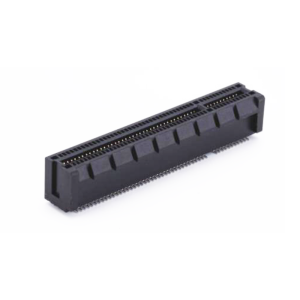Synopsys and Cadence Pioneer PCIe 7.0 Optical card edge connector Interfaces for High-Speed Connectivity
pci-e 7.0 Optical Card Edge Connector Interfaces:
Pioneering High-Speed Connectivity with Synopsys and Cadence In a world where the demand for faster and more reliable data transmission continues to grow, the development of advanced IP subsystems has become increasingly critical. With the ever-growing reliance on data-intensive applications—from cloud computing to AI and machine learning—the need for high-speed connectivity solutions has never been more pressing. This is where Synopsys and Cadence, two of the world’s leading Electronic Design Automation (EDA) companies, come into play with their pioneering work on PCIe 7.0 optical card edge connector interfaces.
The Evolution of PCIe Standards As industries evolve, so too do the standards that support them. PCI Express (PCIe) has long been the standard for high-speed interfaces in computing, offering rapid data transfer rates and low latency.
With the impending rollout of PCIe 7.0, the stakes have been raised even higher. PCIe 7.0 delivers an astounding data transfer rate of 128 GT/s (gigatransfers per second), doubling the bandwidth potential of its predecessor, PCIe 6.0. However, achieving such high bandwidth requires innovative solutions. Traditional electrical connections face limitations, particularly over longer distances, due to signal degradation and electromagnetic interference. This serves as the backdrop for the exciting developments in optical connectivity led by Synopsys and Cadence
Cadence:
A Giant Leap Forward Cadence made waves at the PCI-SIG DevCon 2024 with a groundbreaking demonstration that highlighted the world’s first PCIe 7.0 optical connectivity solution. Utilizing Linear Pluggable Optics (LPO), Cadence successfully managed to transmit and receive PCIe 7.0 signals at a staggering 128 GT/s without the need for a Digital Signal Processor (DSP) or Retimer. This is a game-changer for the industry, as it simplifies the integration process while ensuring exceptional data transmission speeds. The seamless integration of optical interfaces not only meets the speed requirements but also addresses critical challenges regarding power consumption and thermal management. This is essential for next-generation data centers and consumer electronics that demand efficient yet powerful architectures.
Synopsys:
Solidifying Interface Standards In tandem with Cadence’s groundbreaking work, Synopsys has been instrumental in the development of advanced IP subsystem technologies that are crucial in optimizing PCIe 7.0 connectivity. Their extensive experience in EDA tools allows chip manufacturers to access the comprehensive resources needed to implement optical card edge connectors effectively. By providing robust simulation and validation tools, Synopsys is helping to fine-tune designs and ensure regulatory compliance, ultimately reducing time-to-market for new products. ## Transforming High-Speed Interconnect Technologies As Synopsys and Cadence continue to collaborate, they are paving the way for the next generation of high-speed interconnect technologies. The integration of card edge connectors, such as the popular Samtec card edge connector, allows for efficient board edge connectivity while maintaining high-speed transmission capabilities. These connectors facilitate easy deployment in various applications, from consumer electronics to specialized computing tasks. The advent of PCIe 7.0 optical interfaces also signifies a step toward a more interconnected and efficient future. As the world embraces 5G, IoT, AI, and cloud technologies, faster connectivity will be paramount. Optical solutions provide a pathway to achieving these demands, offering scalable, reliable, and high-speed data transmission.
Conclusion The collaborative efforts of Synopsys and Cadence mark a significant milestone in the realm of high-speed optical connectivity. With PCIe 7.0 leading the charge, chip manufacturers now have access to advanced tools and techniques that allow them to meet the demands of tomorrow’s data-intensive applications. As we look toward a future rich with data-driven technology, the innovations in optical card edge connector interfaces will undoubtedly play a crucial role. The journey toward unprecedented connectivity has begun, and these pioneering efforts are setting the stage for a new era in high-speed interconnects.






